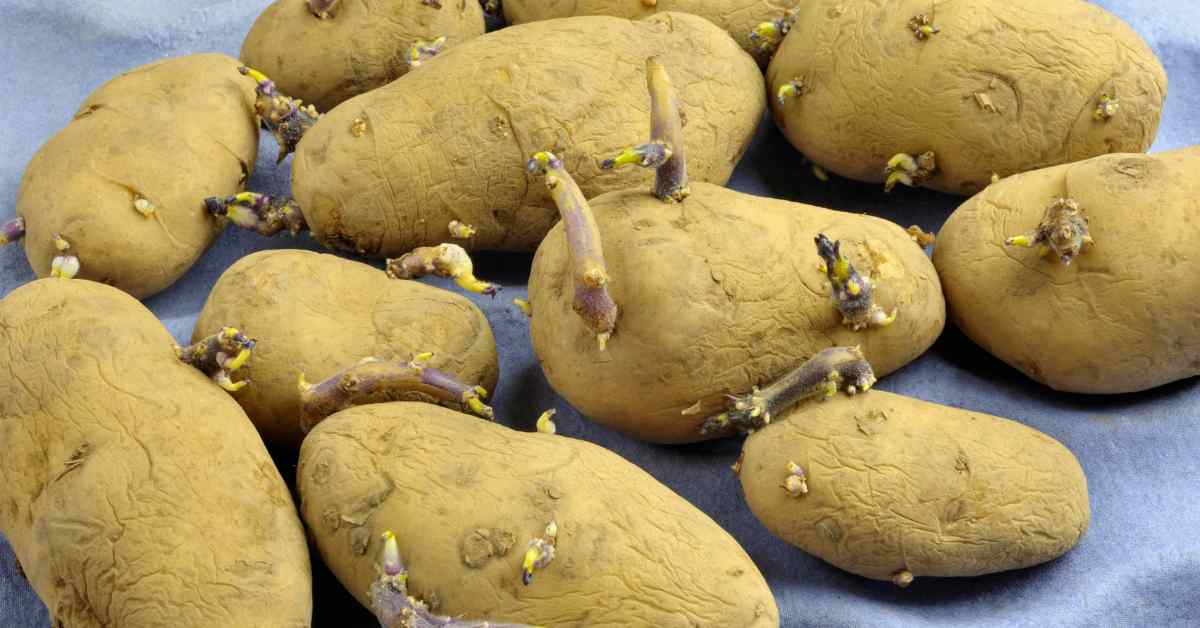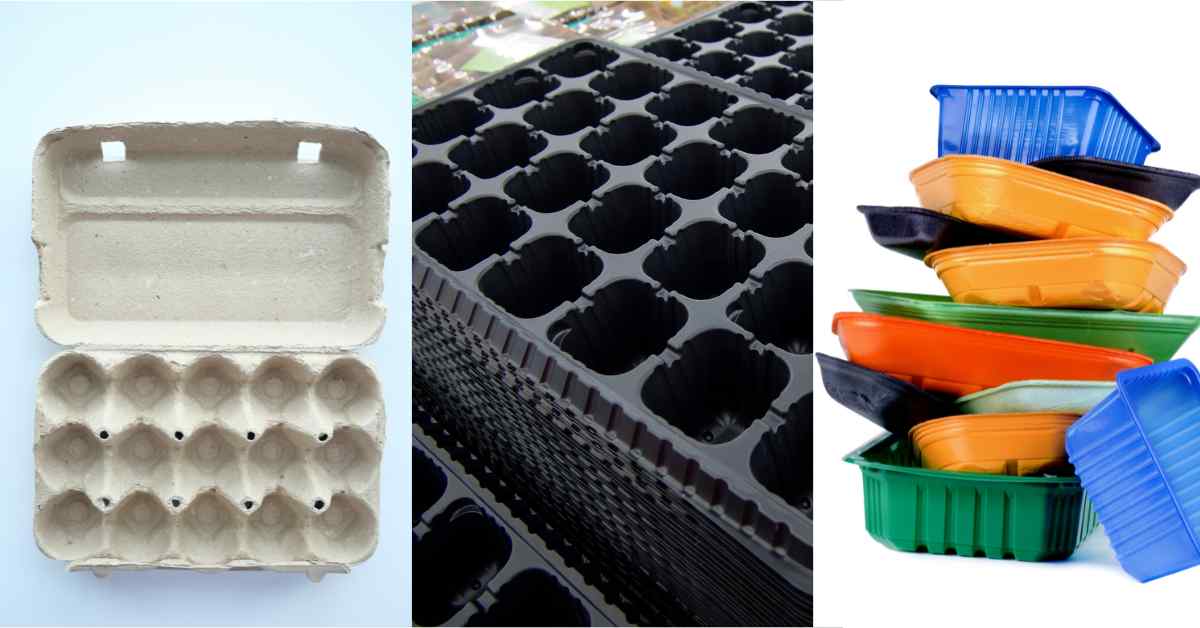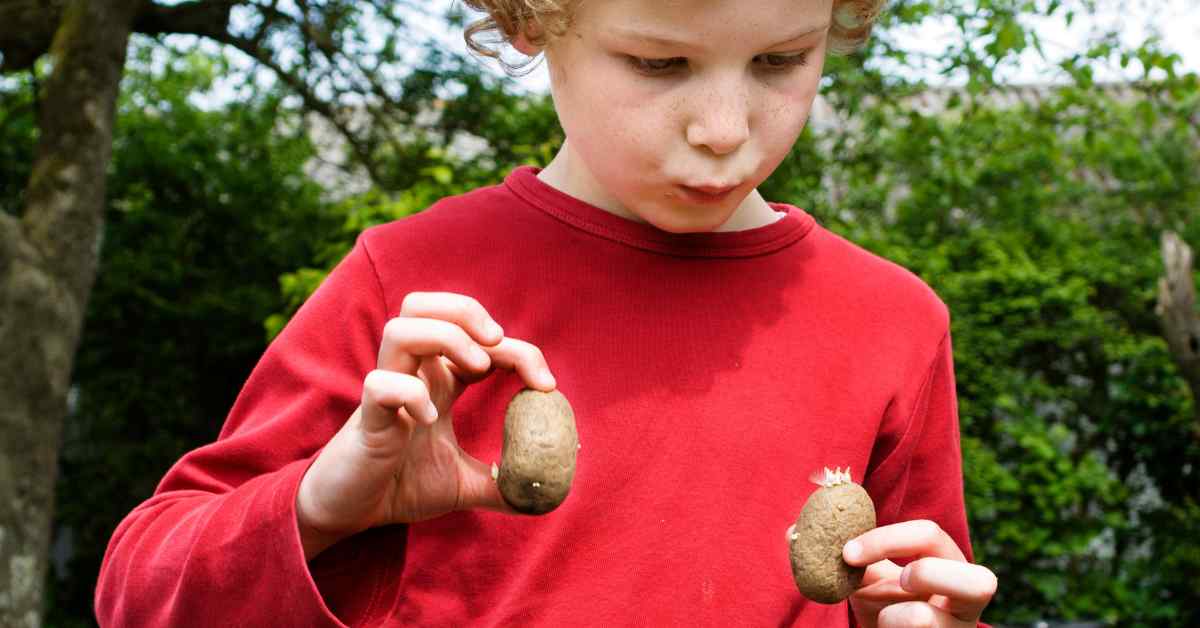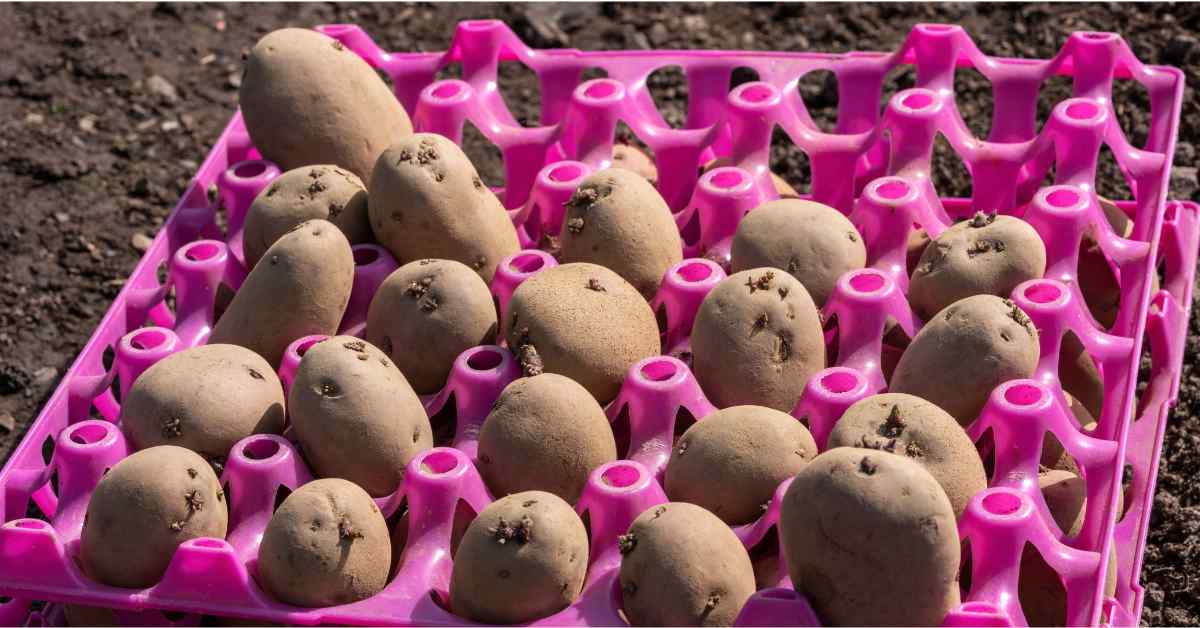What are the learning goals?
Chitting potatoes is a slow observation activity with some fun things to talk about and will help children to understand three things:

Preparing the equipment
Your children can help you to get the equipment ready, because finding the right things will help them to think about what the potatoes need.
Potatoes don't need much to be chitted, they just need some light and something to stop them rolling around. If you are growing more than one kind of potato you need to be able to keep them separate so you know which one is which. Children can help you find something to hold the potatoes.
Good examples are:
- used egg boxes
- empty larger module trays
- a shallow box, or a tray, or used food trays, with scrunched up newspaper or tea towels to keep the potatoes separated and still.

Unpacking and getting ready
Before you start working with the potatoes, make sure you know which varieties are which. If you have more than one type, then only bring out one at a time, so that they don't get mixed up, and you can label them as you go. Enthusiastic children are not always the best at keeping things separate and categorised!
Activity: Observing the seed potatoes
This is a good chance to use some observation skills and use some vocabulary.
Children can unpack one pack of potatoes at a time. Talk to them about what they look and feel like:

Working out which way is "up" on a seed potato
The point of chitting is to get some good, sturdy shoots started before you plant them. So it makes sense to grow a few really good shoots and to encourage them to grow the right way up.
Potatoes create roots from the little bumps called "eyes". Sometimes your seed potatoes will already have some roots forming from the eyes and it will be obvious what they are. Other times your seed potatoes will just have bumps and this is a good way to get the children to observe the potatoes enough to figure out which are potential eyes and which is the best way up to store them.
Activity: Finding eyes and deciding direction.
Children can look at their potato and see how many eyes they can see. Put one of your potatoes in to a holder and ask children whether they can guess whether the top, facing upwards, will sprout, or the bottom, inside the holder.
So once they have worked out that the sprouts need to point upwards, and which end of their potato has more sprouts, ask them to place their potato in the holder the right way round.

Where to chit the potatoes
We want the potatoes to form thick strong shoots. So we must put them in the light, because if they are kept in the dark they will grow thin and spindly as they try to find a light source. You can talk to the children about this and get them to talk about light being important for a plant, and to imagine being a potato and trying to streeeetch to see the light.
Because of this, if we put them in really dark place they will great long shoots to reach the light and we might break them off when we plant them. But on the other hand if we plant them somewhere that is too light or warm, the shoots might dry out and shrivel up.
So this means that the pots should be kept somewhere light and protected from the coldest weather, but NOT in full sun. A window ledge or cold greenhouse is fine as long as it is not sitting in full hot sun.
Help the children to find a good place to care for their seed potatoes.
Activity: Caring for the potatoes while they chit.
Children should regularly check on their seed potatoes. They can use their observation skills to notice the following:
How long to chit potatoes, and when to plant
You can plant potatoes in late March or April. Traditionally people used to plant potatoes on Easter weekend. You can start chitting up to about six weeks before planting.
Don't plant them out just because the dates are right. The soil should be starting to warm up a little. If the spring is late, cold and wet, you will be planting them straight into waterlogged soil and they could rot before they grow.
Follow up reading or watching
If you want to read more about growing potatoes, here is a fun book on Kindle.
This concise video by Love The Garden which will show children the basics of chitting potatoes and how to look for the eyes.
Did you try chitting potatoes with your kids? Did you try any of these suggestions to increase their observation skills or practice their language? What would you do differently next time?
